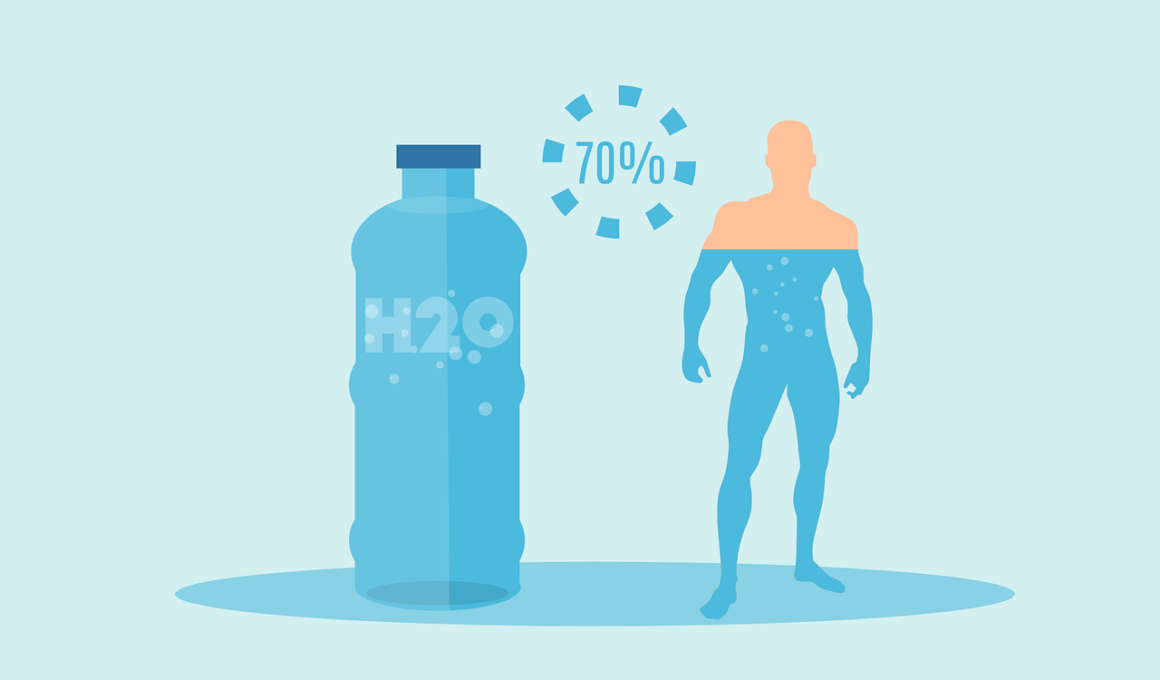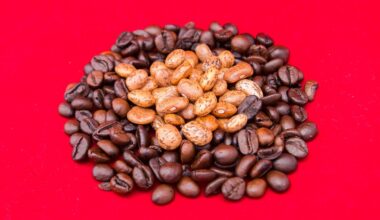Hydration Strategies During CrossFit Competitions
Hydration plays a crucial role in optimizing performance during CrossFit competitions. Athletes must realize the significance of keeping hydrated while tackling various workouts. In the heat of competition, it is essential to drink water and electrolyte-fortified drinks to maintain fluid balance. Hydration improves endurance, supports muscle function, and keeps the body temperature in check. It’s important for athletes to understand that dehydration can hinder performance, causing fatigue and affecting concentration. It’s wise to calculate hydration needs based on body weight and exercise intensity. Consistent hydration leading up to event day ensures optimal performance. Some athletes prefer using hydration calculators to determine their specific needs. Moreover, engaging in hydration preparation before events sets the stage for success. Keeping a hydration log may help track fluid intake over time. Drinking adequate water several days before competition can build up glycogen stores, enabling athletes to perform at their best. Emphasizing hydration strategies is vital for maximizing endurance and effectiveness during intense CrossFit competitions. Therefore, formulating a solid hydration plan becomes imperative to empower athletes and equip them with the resources needed to excel.
Understanding Fluid Loss
Understanding fluid loss is critical for any competing athlete. During strenuous activities, CrossFit athletes typically lose substantial amounts of fluid through sweat. Individual sweat rates can vary significantly depending on the environmental conditions, workout intensity, and personal factors such as body weight. An athlete’s ability to recognize their sweat rate empowers them to adjust their hydration strategies effectively. Monitoring the color of your urine can be an excellent indicator of your hydration status. Clear to light-yellow urine generally indicates adequate hydration, while darker shades signal the need for more fluids. Before a competition, knowing expected weather conditions will help you tailor your hydration approach. For example, high temperatures require athletes to consume more fluids to compensate for losses. In some cases, additional factors, such as altitude and humidity, can further impact fluid needs. Athletes should prepare by figuring out how much fluid they typically lose during workouts that are similar in intensity. A well-structured hydration strategy should be inclusive of pre-, during, and post-competition hydration needs to prevent performance dips during critical workout segments.
During CrossFit competitions, targeted electrolyte replenishment is vital. While water is essential, electrolytes like sodium, potassium, and magnesium help restore lost minerals. Electrolyte loss through sweat can lead to muscle cramps and fatigue, affecting performance. Therefore, using drinks rich in these minerals or supplements can be beneficial. Timing hydration practices to include electrolyte intake is crucial. For instance, consume an electrolyte drink before intense workouts to help prevent depletion during competition. Additionally, incorporating electrolyte-rich foods into pre-competition meals can also boost overall levels. Fruits like bananas and hydration with coconut water provide natural sources of potassium and sodium. Intra-workout hydration with electrolyte drinks can support sustained performance during prolonged activities. Lastly, don’t forget recovery hydration. Post-workout, replenishing electrolytes as well as fluids is critical. Athletes often focus on protein recovery but overlook the importance of fluids. Post-competition hydration enhances recovery and prepares the body for subsequent training sessions. Thus, proper management of electrolyte levels can positively impact the overall CrossFit performance and recovery process.
CrossFit competition day is a critical time to solidify hydration strategies. Preparing a hydration plan tailored to the competition’s length and intensity is essential. Begin hydration early in the day instead of waiting until workouts start. Consistent fluid intake can help combat dehydration better than chugging a large amount right before. Athletes should also consider the timing of their last pre-competition drink. Aim to hydrate within one hour before competing to decrease bathroom breaks. Additionally, have accessible hydration during the competition to allow for regular water or electrolyte drink intake. Carrying a water bottle around the competition floor can serve as a reminder to drink regularly. Establish a hydration schedule that aligns with the pacing of workouts, allowing for strategic sips. Always consider personal preferences and tolerances when selecting drinks. Some athletes may tolerate water better, while others might prefer flavored sports drinks. Staying adaptable and responsive to fluid needs during competition can make a difference in performance. The key lies in creating a tailored plan while listening to your body and making adjustments when necessary.
Post-Competition Hydration
Post-competition hydration is equally as important as pre-competition strategies. After exhausting intense workouts, athletes need a robust recovery process to facilitate muscle restoration and fluid balance recovery. Within 30 minutes post-event, athletes should focus on replenishing lost fluids, incorporating both water and electrolyte-rich drinks. This helps to combat the dehydration experienced during competition as well as reestablish lost nutrients. Additionally, consuming various hydrating foods like fruits and vegetables contributes to rehydration. Foods high in water content, such as watermelon and cucumbers, can be great choices. Furthermore, planning meals after competition that include healthy, hydrating ingredients keeps the hydration process on track. Low-fat dairy products or smoothies with added electrolytes can enhance recovery. Monitoring your body, paying attention to thirst cues, and checking urine color after competition can help adjust hydration strategies. Remaining hydrated will support continued training and overall health. Establishing post-competition routines focused on hydration can lead to improved recovery and readiness for upcoming events. Athletes are encouraged to prioritize this phase of hydration for lasting performance benefits beyond the competition itself.
In conclusion, hydration strategies play a fundamental role in ensuring optimal performance during CrossFit competitions. Understanding individual fluid losses, timing, and electrolyte needs is crucial for athletes. Moreover, adapting pre-, during-, and post-competition hydration plans can significantly impact recovery and performance levels. Planning ahead is key, as athletes can better respond to their body’s needs when a solid framework exists. Remember to stay flexible and observant to changes during competition day too. Continuous water and electrolyte intake can help sustain energy levels and prevent cramps, significantly enhancing the overall experience and effectiveness during the competition. Also, incorporating hydrating foods into meals can support long-term hydration needs and promote better recovery overall. Emphasizing hydration will contribute to better performance, improved concentration, and reduced fatigue, resulting in a more competitive edge. With the right strategies in place, athletes can focus on giving their best in CrossFit competitions. Adequate hydration strategies not only prepare for peak performance but also ensure lasting health benefits, making hydration a top priority every athlete should embrace.
Incorporating hydration education into training can equip athletes with the knowledge necessary for optimal competition outcomes. Discussing hydration with coaches and peers fosters a supportive environment where everyone can share their experiences. Sharing best practices allows athletes to establish personalized hydration plans based on real experiences. Engaging in discussions regarding fluid and electrolyte intake during hard workouts can lead to new insights. Emphasizing the sharing of valuable insights can inspire confidence among athletes preparing for competitions. Furthermore, introducing workshops on hydration can bolster knowledge within the community, generating awareness regarding the significance of hydration. Athletes can experiment before events to understand what works best for their performance. Regular conversation about hydration fosters a culture of shared learning focused on individual optimization methods. Developing community resources centered on hydration can enhance preparation for all athletes involved. Education extends beyond merely competing; it can contribute to overall health and wellness long after the competition ends. Thus, this nurturing community will contribute significantly to advancing hydration strategies within the CrossFit realm, promoting success during competitions.


